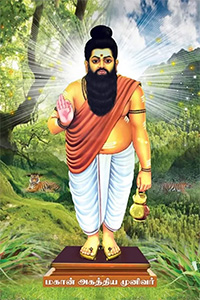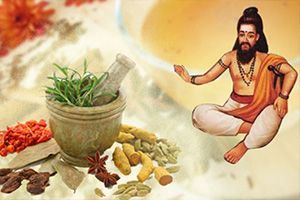Siddha is one of the traditional medical system which evolved in South India.The Siddha system was built on the work of Siddhars, who were mostly from Tamil Nadu. It is called the Siddha medical system because of this. Siddhars were spiritual masters who had the eight special abilities called siddhis. Some of the 18 siddhars were Nandi,Agasthyar,Agappai,Pumbatti etc.The Siddha medical system is thought to have been started by Agastyar, who is also known as Agasthya. Siddhars in rural India have traditionally learned their craft from elders in their communities. Approximately 57% of rural medical services in India were provided by Siddhars, who were among India’s approximately 400,000 traditional healers.
What is Siddha?

Siddha medicine is one of the oldest traditional systems of medicine practised in South India mostly Tamil Nadu and some parts of Kerala. It is based on principles of panchamahabhootam(five basic elements),96 thathuvas(principles),mukkuttram(3 humours) and 6 arusuvai(6 tastes). Soil, fire, water, sky, and air are the five elements that Siddha practitioners believe can be found in everything from food to the “humour” of the human body to herbal, animal, and inorganic chemical substances like sulphur and mercury. These have therapeutic potential and can be employed in the treatment of many illnesses.
Legacy
According to ancient Siddha vaidyam literature, this medicine’s method originated from Hindu god Shiva who taught it to his wife Parvathi.Parvathi then passed it on to Nandi and Nandi taught about it to nine devatas.Though the origin is considered to be divine Agasthyar is considered founding father of Siddha medicine.
Most Siddha doctors are usually trained in their own families and work under the supervision of gurus (teachers). An ashan is what people call the guru when he teaches martial arts.
What a disease is and what causes it?
When the balance of the three humours (Vaadham, Pittham, and Kapam) is upset, the disease shows up. People think that the whole balance is affected by the weather, how much you move, what you eat, and how stressed you are. In normal situations, the amounts of Vaadham, Pittham, as well as Kapam are 4:2:1.
According to the Siddha medicinal practices, the way you eat and live has a big impact on your health and ability to heal from illness. Pathiyam and apathiyam seem to be terms for the Siddha medicine concept, which is basically a set of “dos and don’ts guidelines”
Legend says that the Siddhars were the ones who made this technique of medicine possible. Siddhars were spiritual masters who had ashta siddhis. Nandhisar is the first Siddha and is known as that of the guru of all Siddhars.
Herbalism
- The Siddhars’ herbal agents can be put into three groups: thadhu (inorganic drugs), thavaram (herbal component), and jangamam (animal products).
- The thadhu agents are again divided as uppu(water soluble inorganic things which give vapour when put into fire),pashanam(which are not dissolved in water but emit vapour when put in fire),uparasam(like pashanam but different action),loham(not dissolved in water, but melts in fire),rasam(substances which are soft)and gandhagam(things which are insoluble in water).
Standardization and Keeping an Eye on Quality on Medicine:
The Indian government is very interested in putting in place standardisation and quality control for Siddha medicines. In order to make sure that herbal drugs and medicinal products are of good quality, the Government of India has set guidelines for the Siddha sector. The Government of India has notified Good Manufacturing Practices under Schedule ‘T’ of the Drug and Cosmetics Act of 1940 to make sure and enhance the quality of ASU medicines. It also makes sure that the raw materials used to make drugs are real, of the right quality, and not tainted in any way.
Basic Variation Between Siddha and Ayurveda
- Pulse diagnosis to understand body disorders in Siddha whereas Ayurveda follows pulse diagnosis with limitations.
- Medium of treatise and texts are in Tamil but for Ayurveda treatise and texts are in Sanskrit.
- Rejuvanation therapy(karpamarunthu)is done using herbal, metallic, metallic oxides whereas Ayurveda uses Panchakarma therapies and Rasayana medicines.
- Varmam for neurological problems and girigai for psychological problems are unique for Siddha medicine.
- In Siddha the predominant humour during childhood,middle age and old age are vaadham,pitham and kabam whereas in Ayurveda it is vice versa.
India Health Report- 2003 Oxford
Siddha medicine has its own specialties.
- Karpa medicines help you feel better and keep diseases away, and Yoga is good for your body and mind.
- Skin disease management
- Taking care of psychiatric diseases
- Orthopaedic disease management and Varma therapy
- Managing diseases in older people
Siddha medicine has treatments
In the Siddha field of medicine, treatment is based on three different areas:
- Deva maruthuvam, also called the “divine method,” is based on using medicines made from minerals and metals like mercury and sulphur.
- Maanida maruthuvam, also known as the “rational method,” uses medicines made from plants.
- Asura maruthuvam, also called the surgical method, looks at making cuts, applying heat, using leeches, or drawing blood.
Education
- D. (Siddha): This postgraduate degree in Siddha medicine is affiliated with the Tamil Nadu Dr. M.G.R Medical University in Chennai and approved by the CCIM in New Delhi. It is offered in 8 specialties.
- D – Siddha: For both part-time and full-time research scholars, Ph.D. programmes were set up to improve Siddha’s research ideas. From the 2010-2011 school year, the Ministry of AYUSH approved two Ph.D. fellowships with stipends for Maruttuvam, Ku apam, and Ci14appu Maruttuvam. As of now, 6 full-time Ph.D. students and 15 part-time faculty members have finished their Ph.D. programmes. The rest of the faculty members are still working on their Ph.D.s part-time, with the help of approved guides from The Tamil Nadu Dr. M.G.R Medical University in Chennai.



